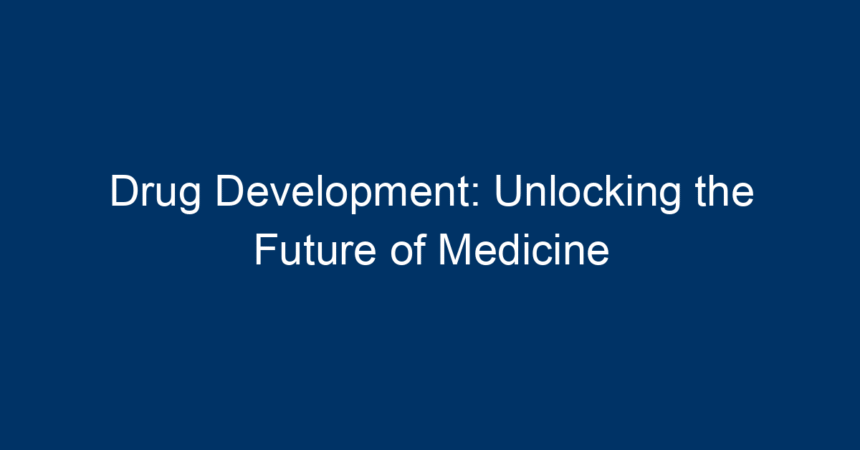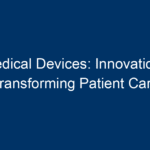In a world where medical science is constantly evolving, drug development stands at the forefront of innovation and discovery. Every day, researchers strive to unlock new therapies that can transform healthcare and improve lives. With breakthroughs in biotechnology, genetics, and pharmacology, the future of medicine looks promising. This article delves deep into the intricacies of drug development, the challenges faced, and the opportunities on the horizon.
What is Drug Development?
Drug development is a complex process that involves the discovery, design, testing, and approval of new medications. It begins with a deep understanding of biological systems and the diseases affecting them. Researchers identify potential drugs and conduct rigorous testing to ensure they are safe and effective for human use. This journey typically consists of several phases, including:
- Preclinical Research: Lab-based tests using cell cultures and animal models.
- Clinical Trials: Controlled studies in humans to assess safety and efficacy across different phases (Phase I, II, III).
- Regulatory Approval: Submission of data to regulatory bodies like the FDA or EMA for review and approval.
- Post-Marketing Surveillance: Monitoring the drug’s effects in the general population after market release.
Understanding each stage is critical for appreciating the effort and resources that go into drug development.
The Drug Development Process: A Closer Look
Preclinical Research
Before a drug can be tested on humans, it undergoes extensive preclinical trials. These tests are vital for determining a drug’s safety profile and how it functions biologically. Researchers focus on:
- Pharmacodynamics: How the drug affects the body.
- Pharmacokinetics: How the body absorbs, distributes, metabolizes, and excretes the drug.
This phase can take several years and involves multiple iterations of testing and refinement. Understanding the biological targets of a drug is crucial in ensuring its effectiveness and safety.
Clinical Trials
Once a drug shows promise in preclinical studies, it moves into clinical trials that occur in three main phases:
- Phase I: Focused on safety, a small group of healthy volunteers is administered the drug to assess its side effects and pharmacokinetics.
- Phase II: Involves a larger group of patients to test the drug’s efficacy while still monitoring safety.
- Phase III: This phase includes thousands of participants and seeks to confirm the drug’s effectiveness in diverse populations.
Successful completion of these trials requires collaboration among various stakeholders, including regulatory agencies, healthcare professionals, and pharmaceutical companies.
Regulatory Approval
After prosperous clinical trials, the next significant step is obtaining regulatory approval. The data collected is submitted to agencies like the FDA (U.S.) or EMA (Europe). These organizations analyze the evidence to determine:
- The drug’s safety and efficacy.
- Appropriate usage guidelines.
- Any potential risks that may arise from its widespread use.
This scrutiny ensures that only safe and effective medications reach consumers.
Post-Marketing Surveillance
Even after a drug is approved, its journey doesn’t end. Post-marketing surveillance entails ongoing monitoring for side effects and long-term effectiveness among the general population. This phase is crucial for identifying rare effects that may not have been apparent during clinical trials.
Challenges in Drug Development
Despite the advancements in technology and science, the journey of drug development is laden with challenges:
High Costs
The financial burden of bringing a drug to market averages between $1 to $2 billion. This huge investment includes costs related to research, clinical trials, regulatory compliance, and eventual marketing.
Long Timelines
The drug development process can take over a decade from initial discovery to market launch. This lengthy timeline can be a barrier to timely patient access to new therapies.
Regulatory Hurdles
Each country has rigorous regulatory standards that must be met for approval. Navigating these can be complex and slow down the development process.
Market Competition
Once a drug is approved, it faces competition from other therapies and generics. Therefore, pharmaceutical companies must strategize effectively to ensure their product’s success.
Scientific Uncertainties
Not all drug candidates will make it through trials, as unpredictability in biological and pharmacological responses can lead to failures. This uncertainty can delay healthcare advancements.
Innovations Shaping the Future of Drug Development
Despite the challenges, the landscape of drug development is rapidly evolving, thanks to groundbreaking technologies and methodologies.
Personalized Medicine
Personalized medicine utilizes genetic information to tailor treatments to individual patients. This approach not only improves drug efficacy but also minimizes adverse reactions. Technological advances in genomics are paving the way for more targeted therapies.
Artificial Intelligence
AI is transforming drug development by accelerating the process of drug discovery and optimizing clinical trials. Algorithms can analyze vast datasets to identify promising drug candidates and predict outcomes more accurately than traditional methods.
Biotechnology and Biologics
Biologics, derived from living organisms, are becoming increasingly important in the treatment of various diseases, including cancer and autoimmune disorders. Advances in biotechnology are allowing researchers to engineer complex molecules that provide targeted therapies.
Hybrid Solutions
Combining traditional methods with novel technologies, hybrid approaches allow for more comprehensive and adaptable drug development processes. This flexibility enables faster responses to emerging health challenges.
Actionable Insights for Stakeholders
To harness the full potential of drug development, stakeholders should consider:
- Investing in Research: Continuous funding and support for research can drive innovation.
- Collaborating Across Disciplines: Collaboration among scientists, technologists, and regulatory experts can streamline the development process.
- Emphasizing Patient Feedback: Gathering insights from patients during trials can help refine therapies and improve adherence once they reach the market.
- Adopting Agile Approaches: Flexible and adaptive methodologies can respond more quickly to scientific breakthroughs and market demands.
Conclusion
The journey of drug development is long and complex, but it is fundamentally essential for advancing healthcare. By embracing innovations and overcoming challenges, the future of medicine promises to be more personalized and effective. Stakeholders must work collaboratively to unlock the full potential of new therapies, ensuring that patients benefit from the latest advancements in medical science.
Through informed investment, collaboration, and openness to new technologies, we can look forward to a future where medical breakthroughs continue to improve lives worldwide. As we stand on the brink of these exciting advancements, the commitment to drug development shines brightly as a beacon of hope in the realm of medicine.




